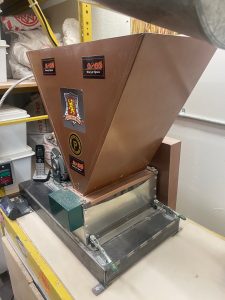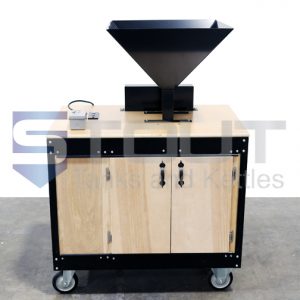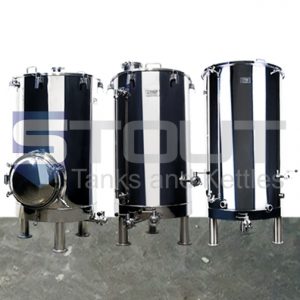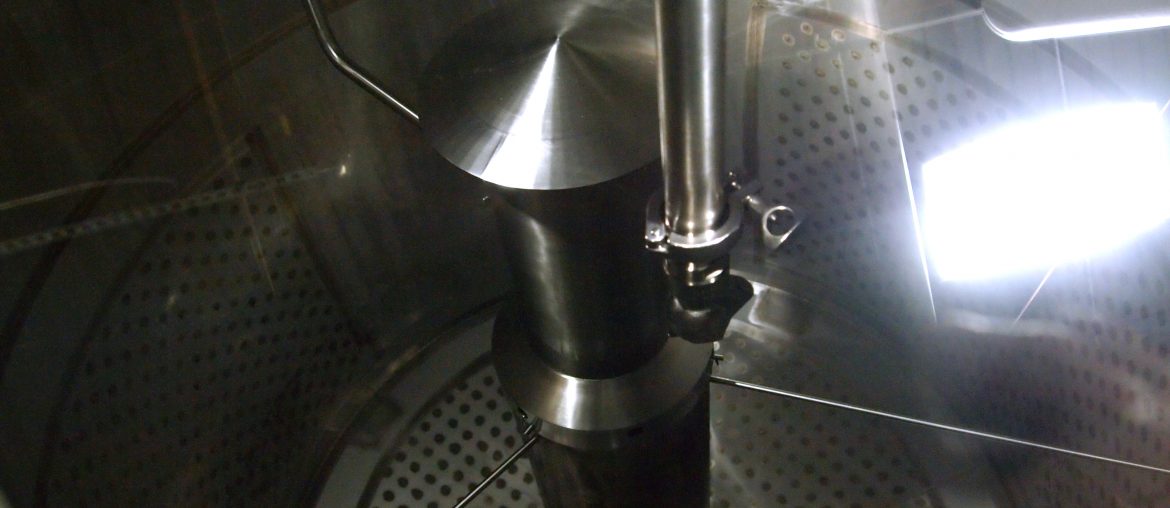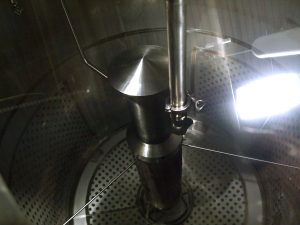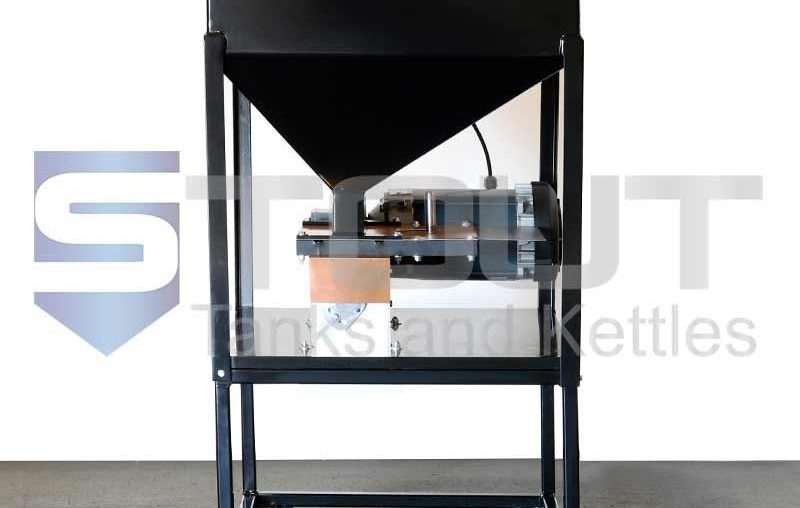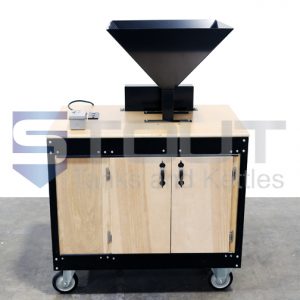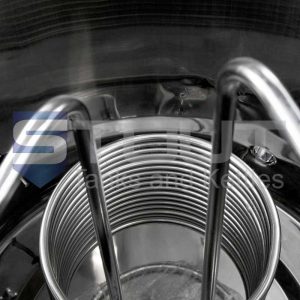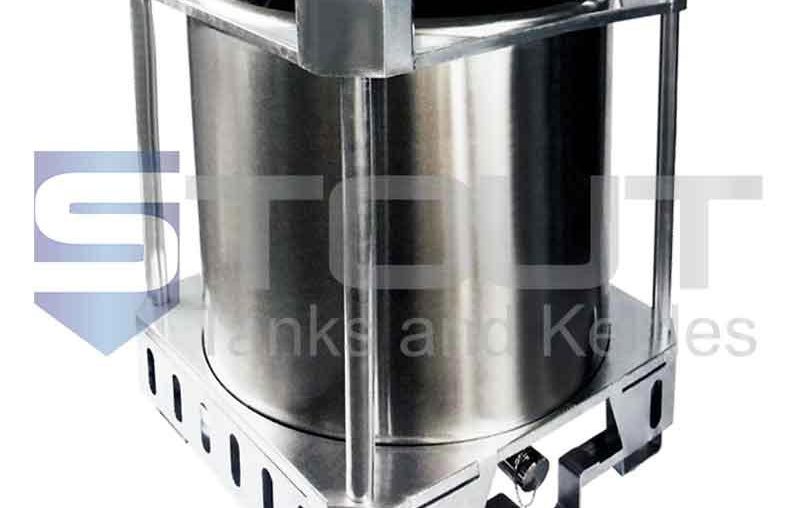Not all IBC totes are made equally. Some plastic intermediate bulk containers are made as cheaply as possible to store and transport waste oils or hazardous materials. These plastic IBC totes, however, can allow oxygen to pass through the plastic, which can oxidize wine, cider, beer and other beverages or liquids. If maintaining flavor and limiting oxidation is important to you, we recommend using a stainless steel ibc container.
Stout Tanks and Kettles’ IBC totes are designed for craft beverage production, cannabis and pharmaceutical uses. If quality is a concern for your product, here are some things you should consider when searching for intermediate bulk containers:
Design:

IBC totes are designed to fill the gap between drums/barrels on the small side, and permanent tanks on the large size. They fill that intermediate need for storing and transporting liquids.
Forklift Accessibility:
All IBC tote tanks should be easily moved with a forklift, and easily stacked when full or empty. While some IBCs can be forklifted only from one direction, it is better to have a tote that is accessible from any side. This will help to increase maneuverability and save you time when loading and unloading your product.
Stackability:
Please make sure that your IBC can withstand the weight of another full tote on top. All of Stout Tanks’ IBC totes are forkliftable from 4 sides and can be stacked 2 high when full. This is a great way to save storage space in your building.
Material:
Materials matter when it comes to IBC construction. Plastic IBC totes are popular because they are less expensive than stainless steel, but not all plastic is rated for food and beverage use. Some plastics will pick up flavors and odors from the previous liquid in the container, and this can affect the flavor and aroma of whatever is in the tote next. Food-grade plastic IBC totes are not always sanitary. Plastic is easily scratched, and any scratch in plastic can harbor bacteria or yeast that can infect your container. Once a plastic IBC is scratched, it can be difficult or impossible to clean completely. Many plastic IBCs include NPT fittings or NPT-to-tri-clamp adapters, which are less expensive but require manual cleaning and still allow bacteria to build up over time. All of our tanks feature stainless steel tri clamp fittings and to ensure the most secure and sanitary connection.
Distilleries or extraction companies that use ethanol, (or any other flammable liquid, including alcohol in greater than 16% ABV) are not allowed by code to use plastic IBCs for storage. Many building codes specifically prohibit plastic containers for any flammable liquid. But even the type of stainless makes a difference. Many distilleries find that neutral grain spirits (also known as GNS or NGS) are hard on 304 stainless steel, and prefer to store their ethanol or GNS in 316 stainless. Stout Tanks and Kettles sells both 304 and 316 grades of stainless steel IBC totes.
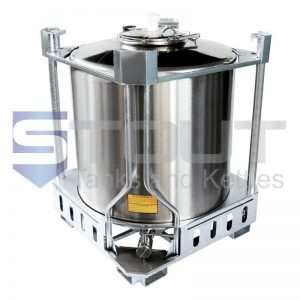
Temperature control:
If you need to control the temperature of the contents of your IBCs, stainless steel gives you a couple of options. First, stainless steel is an excellent conductor of heat energy. Many winemakers and brewers choose single walled (non-jacketed) IBC totes that can be stored in a cooler, cold room, or barrel room. The difference between the ambient room temperature and the contents of the IBC tote are equalized via the thermally conductive stainless steel. Plastic totes insulate the contents of the tank more-so than stainless.
Stout Tanks offers stainless steel totes with glycol jackets for more precise temperature control. Jacketed totes have an extra external jacket layer for chilled or heated glycol to circulate. You can mount a temperature probe into your IBC and circulate glycol to maintain the precise temperature for your tote. If you need accurate temperature control, faster temperature changes, or if the space in your cold room is limited, you should consider jacketed totes.
Maintenance Cost:
Price is obviously an important factor in any IBC purchase, but the costs to maintain, clean, and replace an IBC are also important considerations. Stainless steel is durable, and will last decades when maintained properly. Plastic IBC totes will last only as long as the plastic is not scratched, stained, or contaminated with flavors or odors. Stout Tanks’ totes are cylindrical which makes cleaning much easier, eliminating tricky corners in rectangular tanks. Plastic IBC containers often have many nooks and crannies. Stout Tanks and Kettles’ IBC totes come with a sanitary tri-clamp port for Clean In Place (CIP) spray balls. A tote that takes extra effort to scrub and verify cleanliness will be much more expensive in the long run than a tote you can CIP in a jiffy.
Uses and Applications:
Many brewers use IBC totes as a cost effective cold liquor tank. A non-jacketed tote in the cool room or a jacketed tote connected to the glycol system will provide a nice reservoir of cold water to cool your wort. Many winemakers use a tote as a barrel topping tank. They fill a tote with wine and move it around the barrel room wherever needed. Distillers and cannabis extraction companies use IBCs to store their distillate or ethanol, or to infuse alcohol with botanicals. Kombucha brewers use IBC containers to steep and store tea, or to infuse tea with botanicals or other back sweeteners. The uses for IBC totes are limited only by your imagination.
Take a look at our Jacketed and Non Jacketed IBC totes
